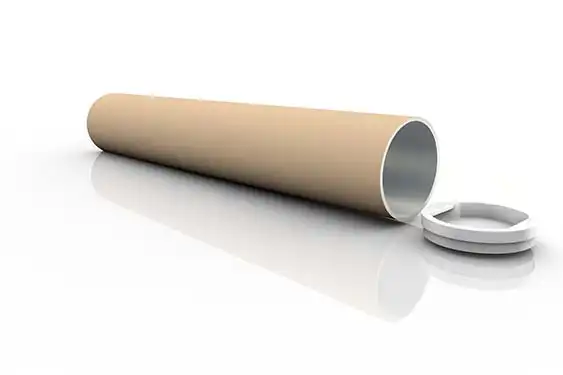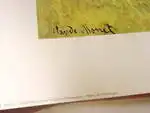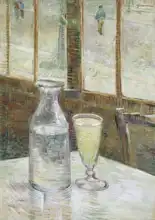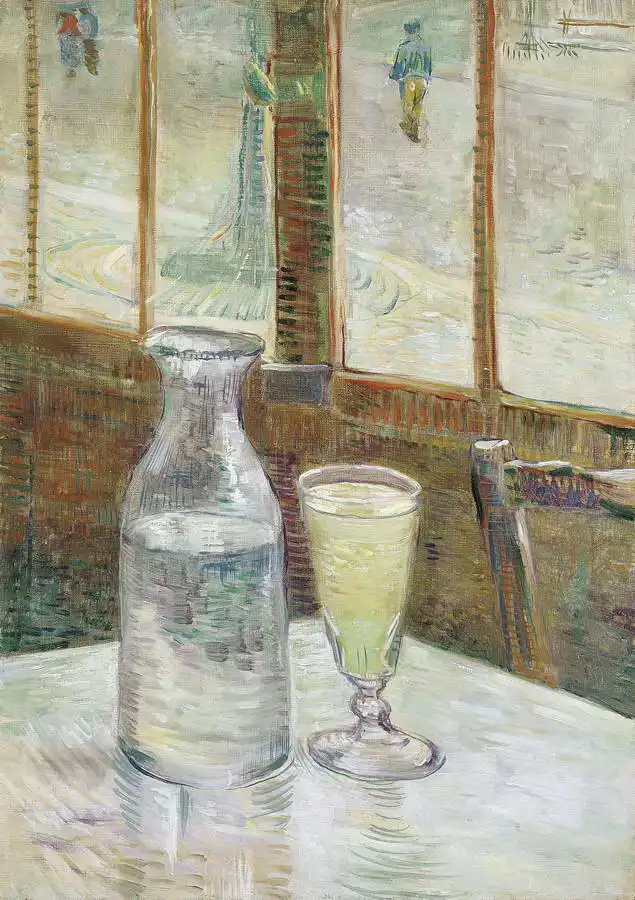About this finishing
Print. The image is printed on the top quality 10-ink HP Z9PS printer on HP matte 270 g / m2 paper. You can choose any size to an accuracy of 1 cm. A margin of 5 cm around the image is added to the size of the motif.


You can find a detailed description about our finishings
here.
Cafe table with absinthe
Date:
1887 Vincent Willem van Gogh created a painting called "Café Table with Absinthe" in 1887. This work depicts the interior of a Parisian cafe and is characteristic of van Gogh's style and his distinct
Post-Impressionist approach.
The painting shows the interior of the cafe, which includes a table with absinthe glasses and bottles. The atmosphere of the cafe is captured with bold colors and brushstrokes. Van Gogh uses bold and saturated colors that are characteristic of his art. Colors such as green, blue and yellow add to the emotional feel of the work.
The artist focuses on the effects of light and shadow, which contributes to the atmosphere and realism of the image. The light from the cafe lamp casts shadows on the table and the surroundings. Glasses and a bottle of absinthe, which was a popular alcoholic drink at the time, are placed on the table. The presence of absinthe may refer to the artist's fascination with and the social context of the time. Van Gogh uses characteristically strong and visible brush strokes, which is typical of his post-impressionist style. These strokes add energy and dynamism to the image.
Gogh painted picture Cafe table with absinthe in 1887. Prevailing color of this fine art print is green and its shape is portrait. This image is printed on demand - you can choose material, size and finishing.
Vincent Willem van Gogh (1853-1890). Dutch painter belonging to
Post-Impressionism. His paintings (some 900 paintings and 1,100 drawings and sketches) are among the most famous in the world and are sold for exorbitant sums (except for those in our shop).
Parisian Impressionists He lived in Paris from 1886 and was influenced by the use of bright colours - most of his works were painted during this period. In his paintings, Gogh uses contrasting colours (often blue and orange - he said that I want to use colours other contrasts to each of them shone even more to contrast a man and a woman). He was known for his excesses and amputated an ear after the break-up of his friendship with
Gauguin. There is a lot of speculation about this incident (he possibly suffered from heavy metal poisoning from paint that had caused mental problems). In 1890, unfortunately he committed suicide.


